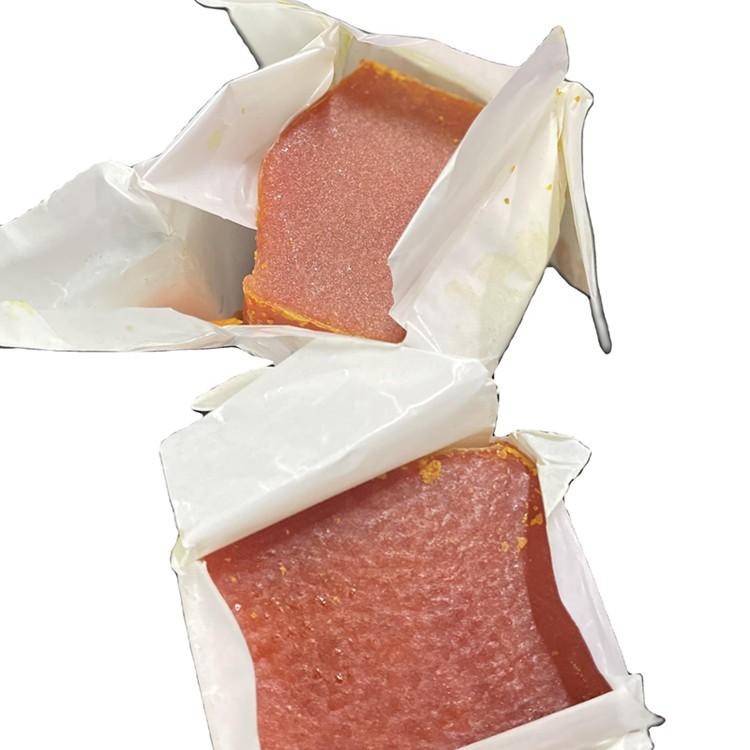Author:Baby & Adult Diaper Materials FROM:Diaper Materials Manufacturer TIME:2023-03-07
Because diapers have strong liquid absorption ability and can completely absorb urine in the finished product, diapers have been widely used in infants and adult incontinence patients. When the urine is absorbed more than a certain number of times, the diapers need to be replaced. However, sometimes it is not easy to observe with the naked eye, especially for young mothers who are inexperienced, sniffing or touching with the nose will definitely have an unpleasant experience. . At the same time, if it is not replaced in time, this kind of humid environment will cause the baby's "red buttocks" in mild cases, and induce eczema in severe cases. Therefore, it is urgent to endow diapers with the function of visual monitoring, that is, the wetness indicator glue display function, which we call hot-melt wetness indicator glue.
The structure of diapers is generally divided into three layers. The surface structure is a hydrophilic non-woven fabric, the middle is an absorbent core layer, and the bottom structure is generally a polyethylene film. The bonding effect of the hot melt adhesive makes the above dispersed substrates a complete absorbent product. The embryonic form of wetness indicator glue is formed by organically combining hot melt adhesive with substances that are color-sensitive to pH (that is, urine wetness display). We apply the wetness indicator glue in the form of lines on the side of the base film facing the core layer. When the urine wets the core layer, it is transmitted to the surface of the wetness indicator glue, causing the pH value to change, resulting in a change in color, reaching the urine Significant visual monitoring function.

a: Main resin
The main resin used for wetness indicator glue is generally a polymer elastomer, such as SIS, SBS, SEBS, SEPS, etc. Styrene and its block copolymers (SBS, SIS) are the most widely used, usually thermoplastic elastomer as the main resin, together with tackifying resin, softener, antioxidant, pH indicator, etc. can be made into wetness indicator glue.
b: Tackifying resin
The addition of tackifying resin can reduce the melting viscosity of the hot melt adhesive, make it easy to wet the surface of the adherend after coating, prolong the shelf life, improve the bonding strength and flexibility, and facilitate the coating operation. Tackifying resin is a type of amorphous thermoplastic polymer with a molecular weight of several hundred to several thousand and a softening point of 60-150°C. The common ones are rosin resin, mushroom resin, petroleum resin and polyisobutylene.
c: Surfactant with good compatibility
Surfactants can increase the wetness of the wetness indicator glue to water, common substances such as polyethylene glycol and polyether.
d: pH indicator

The function of the pH indicator is to respond to the change of the pH value of the urine gel in time. When the urine adheres to the surface of the wetness indicator glue, there will be a strong and vivid color contrast change during the discoloration process to remind people that the baby's diaper has been soaked by urine. Soggy. If the color transition is not strong enough, it cannot serve as a reminder.
To sum up, this article introduces the principle and composition of wetness indicator glue, in the hope that consumers can use diapers better.


 Email: info@whldiapernonwoven.com
Email: info@whldiapernonwoven.com
 MP/WhatsApp: +86-13599937366
MP/WhatsApp: +86-13599937366
 Manufacturer Address:Room 1105B, Bld M1, Manhattan, Yulongwan, Shimao, Shuanglong Road, Meiling Street, Jinjiang, Fujian, China
Manufacturer Address:Room 1105B, Bld M1, Manhattan, Yulongwan, Shimao, Shuanglong Road, Meiling Street, Jinjiang, Fujian, China